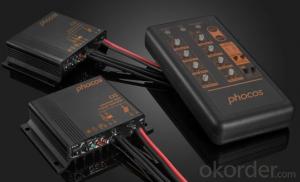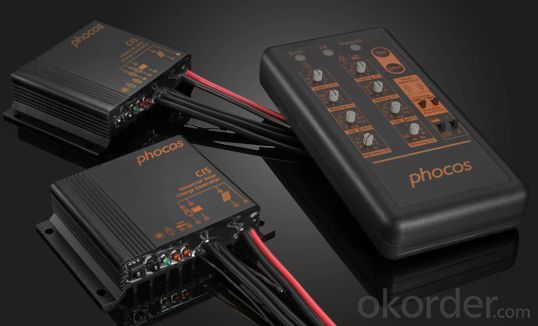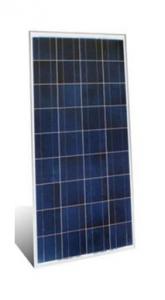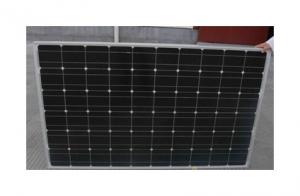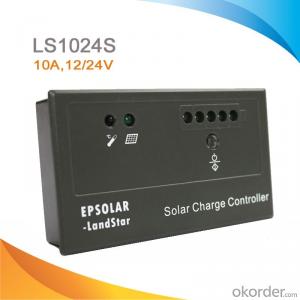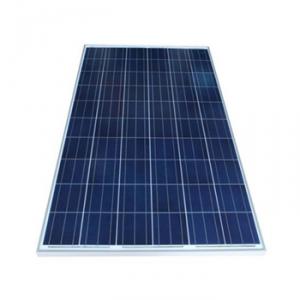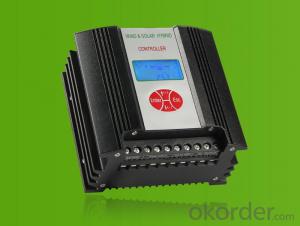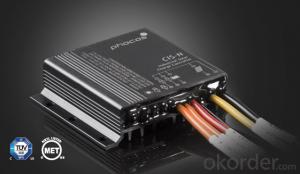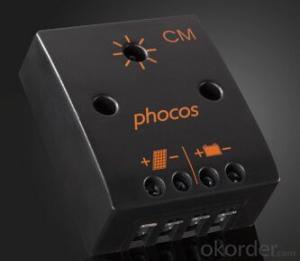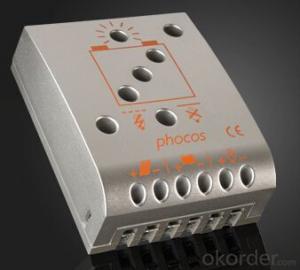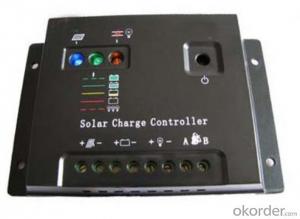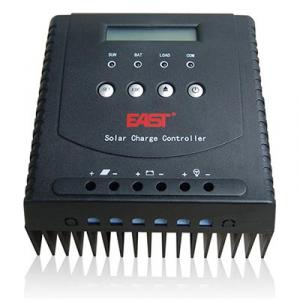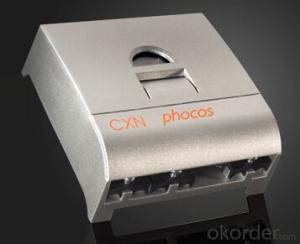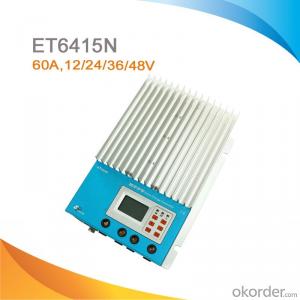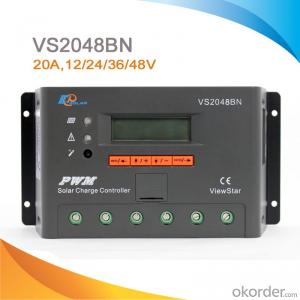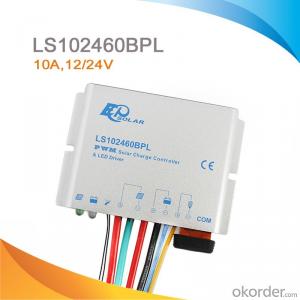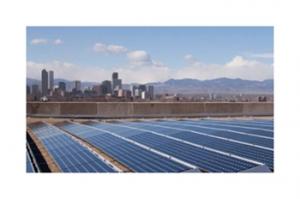Solar Power Charge Controllers - CIS Series (5 – 20 A) Industrial Solar Charge Controller
- Loading Port:
- China Main Port
- Payment Terms:
- TT OR LC
- Min Order Qty:
- -
- Supply Capability:
- 10000 unit/month
OKorder Service Pledge
OKorder Financial Service
You Might Also Like
· Robust Aluminum Housing
· Epoxy Encapsulated PCB to Prevent Corrosion (IP68)
· Compact Size
· Infrared Remote Control Programming Accessory (CIS-CU)
· Intelligent Timer Functions
· Widely Programmable
· External Temperature Sensor
· 4 Stage Battery Charging (Main, Float, Boost, Equalization)
· Dual load or Dimmable Load Output
· Automatic System Voltage Recognition (12/24 V)
· PV-Systems exposed to extreme weather/environmental conditions (street lights, navigation buoys, etc.) have increased risk for damage in the power electronics. In order to assure reliable battery charge control under such conditions, Phocos developed an encapsulated charge controller (IP68) to prevent corrosion: CIS.
· CIS is an industrial-grade charge controller that is suitable for all practical PV applications. High-quality, 4-stage PWM-charging is combined with amazing features such as: low-voltage disconnect, flexible load timer functions, and a multi-LED system status display. CIS is available in two versions:
• Dual load to independently control two loads.
• Output Dimming to save energy in lighting applications.
· The CIS has no moving parts, switches or buttons. Settings such as battery type, deep discharge thresholds, timers, etc. are made quickly and easily via infrared remote control accessory.
· All devices are connected to the controller by supplied lead wires rather than wire terminals. This feature eliminates the risk of damage from external influences (corrosion, dust, water, bugs, chemicals, physical shock) where components make electrical contact to the controller.
· The extremely compact aluminum housing even allows for mounting CIS inside street light poles. CIS was developed in accordance with well-established Phocos standards incorporating the latest technology, highest-quality and best possible cost/performance ratio.
· The CIS family welcomes new members: the CIS-N and CIS-LED. The CIS-N and CIS-LED series have all the great features of the original CIS series, with the added benefit of negative grounding.
· The CIS-N is designed especially for applications in the gas and oil industry, such as remote monitoring, weather stations, valve controlling, SCADA, and many more.
· The CIS-LED combines three functions in one: Charge controller + flexible timer + LED drivers, making it perfect for users of solar LED lamps and solar LED street lights.
- Q: What is the role of a solar controller in preventing battery freezing?
- The prevention of battery freezing is of utmost importance, and this is where the solar controller plays a vital role. It is responsible for managing the battery's charging process, ensuring optimal charging and safeguarding it from potential harm. In colder temperatures, the risk of battery freezing arises, which can lead to irreparable damage or render the battery useless. To combat this, the solar controller diligently monitors the battery's temperature and voltage levels. Its primary function is to regulate the charging process, preventing overcharging that can generate excessive heat and increase freezing risks. Additionally, some solar controllers possess a temperature sensor that detects low temperatures and adjusts the charging voltage accordingly. By reducing the charging voltage, the solar controller prevents freezing while maintaining an adequate charge level. Moreover, advanced solar controllers often provide extra features to prevent battery freezing. One such feature is temperature compensation, which adjusts the charging voltage based on the battery's temperature, ensuring optimal charging even in extreme conditions. Furthermore, some controllers include a low-temperature disconnect function. This function automatically disconnects the battery from the solar panel when the temperature falls below a certain threshold, thus preventing freezing and potential damage. In conclusion, the solar controller's role in preventing battery freezing involves the regulation of the charging process, monitoring temperature and voltage levels, and adjusting the charging voltage based on the battery's temperature. With these functions in place, the battery remains safeguarded and operational even in the coldest weather conditions.
- Q: Can a solar controller be used with solar panel grounding systems?
- Yes, a solar controller can be used with solar panel grounding systems. A solar controller is responsible for regulating the power output from the solar panels to the connected batteries or grid, and it does not interfere with the grounding system. Grounding is an essential safety measure in solar installations to protect against electrical faults and lightning strikes. Therefore, using a solar controller does not affect the functionality or effectiveness of the grounding system.
- Q: Can a solar controller be used with solar panels that are not in perfect condition?
- Solar panels that are not in perfect condition can still be used with a solar controller. The purpose of a solar controller is to regulate the flow of electricity from the panels to the batteries or grid, regardless of the panels' condition. It safeguards the batteries from overcharging and ensures efficient charging. Even if the panels are not in ideal condition, the solar controller can still handle the energy flow and supply the necessary power to the connected system. Nevertheless, it is essential to acknowledge that the panels' condition can impact the efficiency and overall performance of the solar system. Therefore, it is advisable to maintain and repair the panels to maximize energy production.
- Q: How do I ensure proper ventilation for a solar controller installation?
- To ensure proper ventilation for a solar controller installation, it is important to consider the following steps: 1. Choose an appropriate location: Select a well-ventilated area with sufficient airflow. Avoid placing the controller in a confined space or areas that can accumulate excessive heat, such as near heating equipment or direct sunlight exposure. 2. Provide adequate clearance: Ensure that there is enough space around the controller to allow for proper air circulation. This includes maintaining at least a few inches of clearance on all sides of the device. 3. Install a fan or ventilation system: If the chosen location does not provide sufficient natural airflow, consider installing a fan or ventilation system specifically designed for electronics. This can help dissipate heat and maintain an optimal operating temperature for the solar controller. 4. Avoid blocking air vents: Check the controller's manual or specifications to identify any specific ventilation requirements or recommended orientations. Ensure that no objects or obstructions block the air vents of the controller, as it can hinder the cooling process and lead to overheating. 5. Monitor temperature: Regularly monitor the temperature of the solar controller using built-in temperature sensors or additional monitoring devices. If the temperature seems to be consistently high, it may indicate a need for improved ventilation or additional cooling measures. By following these steps, you can ensure proper ventilation for your solar controller installation, which will enhance its efficiency, prolong its lifespan, and minimize the risk of overheating.
- Q: What is the maximum number of user profiles supported by a solar controller?
- The maximum number of user profiles supported by a solar controller can vary depending on the specific model and brand. However, most solar controllers typically support multiple user profiles, ranging from 2 to 10 profiles or more.
- Q: Can a solar controller be used with different types of batteries (e.g., lead-acid, lithium-ion)?
- Indeed, various batteries, such as lead-acid and lithium-ion, can be utilized alongside a solar controller. The chief purpose of solar controllers is to oversee and govern the battery charging procedure, guaranteeing that they are charged at the correct voltage and avoiding both excessive charging and insufficient charging. They possess the capability to be programmed or fine-tuned to match the distinct charging demands of diverse battery types. This adaptability empowers users to link and charge an assortment of batteries using just one solar controller, presenting a versatile and practical resolution for solar power systems.
- Q: How do I prevent deep discharge of batteries with a solar controller?
- To avoid the occurrence of deep battery discharge with a solar controller, there are several crucial measures you can take: 1. Opt for a suitable solar controller: Ensure that the solar controller you choose is equipped with a deep discharge protection feature. This feature will actively monitor the battery voltage and prevent it from falling below a specific threshold, thus safeguarding it against excessive discharge. 2. Establish the low voltage disconnect (LVD) level: Most solar controllers permit the adjustment of the LVD level, which determines the point at which the controller will disconnect the load to prevent further battery discharge. Set the LVD level to a secure value that guarantees the battery will not be discharged below the recommended minimum voltage. 3. Regularly monitor the battery voltage: Keep a close watch on the battery voltage by employing a battery monitor or voltage meter. This will enable you to assess the battery's state of charge and ensure it does not decline excessively. If you observe the voltage approaching the LVD level, take appropriate action to recharge the battery. 4. Implement battery protection measures: If you possess a substantial solar system or anticipate being away for an extended period, consider incorporating supplementary battery protection measures. These measures may involve the utilization of devices such as a battery protector or a low voltage disconnect switch, which will automatically isolate the battery from the system once it reaches a specific voltage threshold. 5. Adequately size your solar system: Verify that your solar panel array is appropriately sized in relation to your battery bank. A properly sized system will generate sufficient power to keep your batteries adequately charged and prevent deep discharge. It is imperative to take into account factors such as daily energy consumption, weather conditions, and battery capacity when sizing your solar system. By adhering to these steps and consistently monitoring your battery voltage, you can effectively avert deep battery discharge with the assistance of a solar controller. This will contribute to prolonging the lifespan of your batteries and ensuring optimal performance of your solar system.
- Q: Can a solar controller work with different types of solar panels?
- Yes, a solar controller can work with different types of solar panels as long as the voltage and current ratings of the panels are within the specifications and capabilities of the controller.
- Q: Can a solar controller be used with solar panel arrays in series?
- Yes, a solar controller can be used with solar panel arrays in series. The solar controller regulates and optimizes the charging of the batteries, regardless of the configuration of the solar panels.
- Q: What is the maximum distance a solar controller can be placed from the batteries?
- The maximum distance a solar controller can be placed from the batteries depends on the specific model and its design. In general, the distance should be minimized to reduce voltage drop and ensure efficient charging. It is recommended to consult the manufacturer's specifications or guidelines for the specific solar controller being used to determine the maximum distance allowed.
Send your message to us
Solar Power Charge Controllers - CIS Series (5 – 20 A) Industrial Solar Charge Controller
- Loading Port:
- China Main Port
- Payment Terms:
- TT OR LC
- Min Order Qty:
- -
- Supply Capability:
- 10000 unit/month
OKorder Service Pledge
OKorder Financial Service
Similar products
Hot products
Hot Searches
Related keywords
